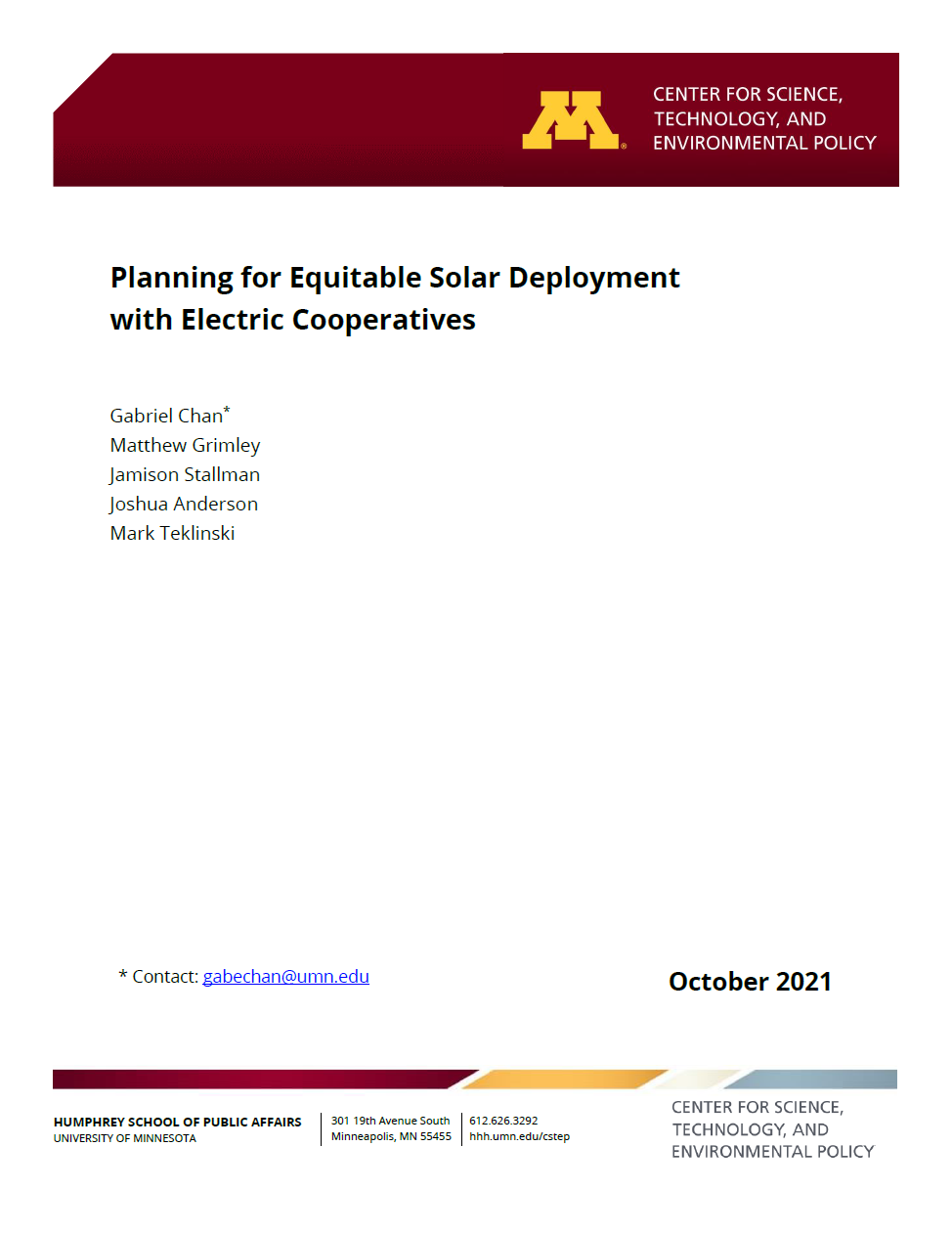Planning for Equitable Solar Deployment with Electric Cooperatives
Recommended Citation
Chan, Gabriel, Matthew Grimley, Jamison Stallman, Joshua Anderson, and Mark Teklinski. 2021. Planning for Equitable Solar Deployment with Electric Cooperatives. University of Minnesota Center for Science, Technology, and Environmental Policy.
Abstract
The increasing viability of distributed energy resources (DERs) and variable renewable energy resources is creating a host of opportunities and challenges across the energy sector. Electric cooperatives face a unique set of opportunities and challenges with respect to DERs and renewables. An important concern for electric cooperatives, as consumer-owned utilities, is the fairness of DER and renewable deployment. This report focuses on the specific opportunities and challenges of solar photovoltaic (PV) electricity generation for electric cooperatives, focusing on frameworks, methods, and deployment models for cooperatives to develop equitable approaches to solar deployment.
Key Findings
Electric cooperatives are exploring a wide array of deployment models for solar PV tailored to their local contexts. Solar deployment in cooperatives has accelerated in the past 10 years, and new deployment models are varying altering where solar projects are interconnected on the grid, the ownership of projects, the offtaker of project, and whether specific parties are able to opt- in to projects.
Whether DERs, including solar PV, challenge or support a cooperative’s ability to deliver equitable service requires clarity on frameworks and assumptions. Utilities and researchers have deployed many alternative frameworks for considering fairness and cross-subsidization which vary in their temporal frame of reference and approaches to considering cost allocation.
Understanding cross-subsidy from an incremental costing perspective can be an effective and transparent framework for understanding the fairness of new solar PV projects over the long-run. By using a forward-looking long-run incremental cost perspective, as opposed to a short-run incremental cost perspective, solar models can be designed to ensure that non-participants are not unfairly bearing the costs of solar PV projects.
Evaluation tools, such as the Multi-Level Incremental Cost (MLIC) model that we developed in this project, can help cooperatives evaluate the potential for solar PV deployment to avoid cross-subsidization. The MLIC model is fit-to-purpose for cooperatives seeking to prospectively evaluate innovative solar PV deployment models that introduce new value flows across the levels of the cooperative.
The collaborative and iterative research process we engaged in in this project helped ground participants in shared learning. Various forms of engagement, such as structured interviews and discussion groups, were crucial processes that brought about effective learning among all of the involved stakeholders and were critical for the research team to apply cutting-edge research. The project included personnel that could translate and understand utility practices, researchers, and professional facilitators across 15 months of collaboration. This approach could be a model for future collaborative efforts with electric cooperatives.

